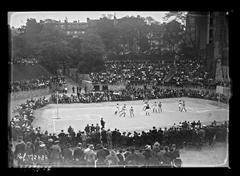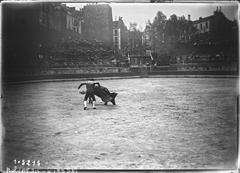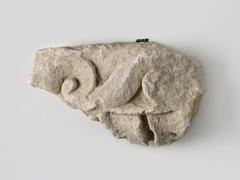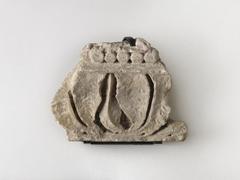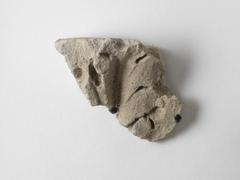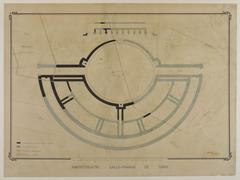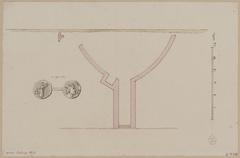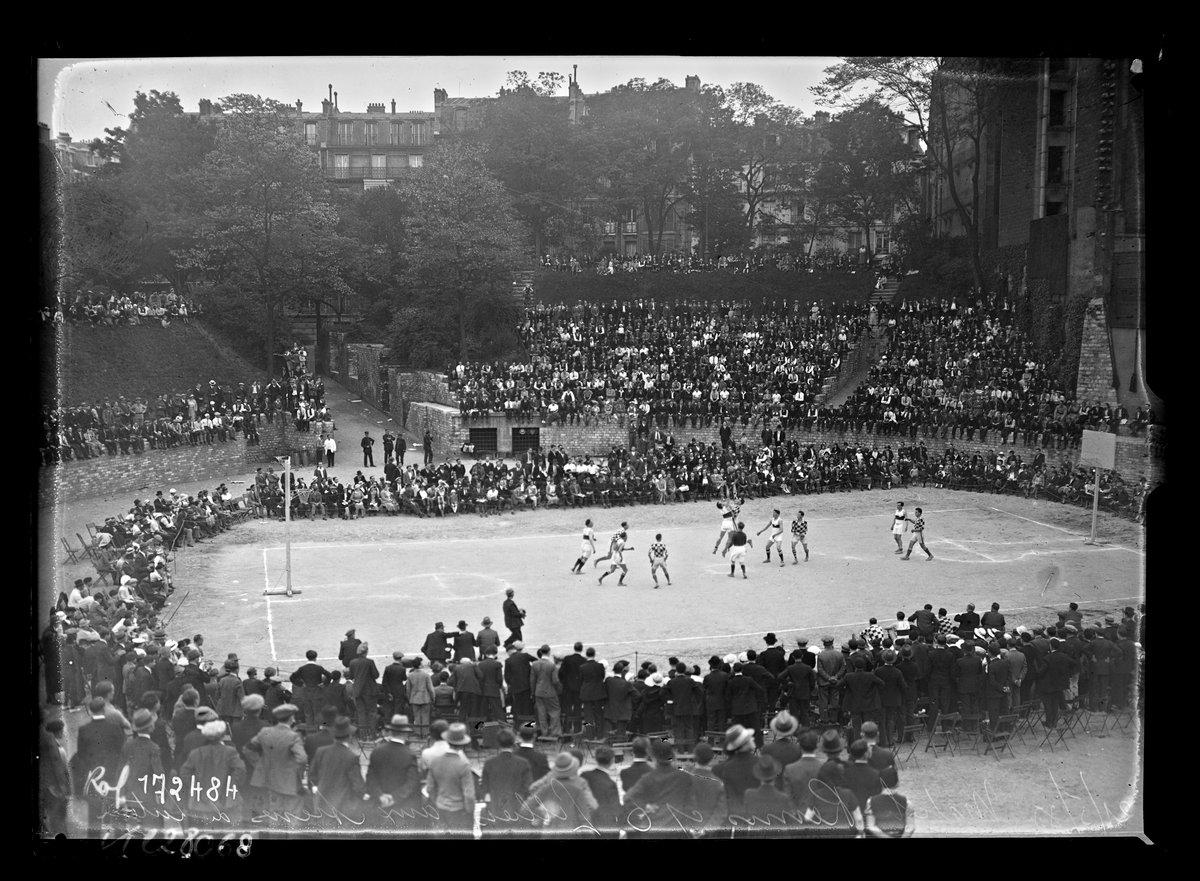
Arènes de Lutèce Visiting Hours, Tickets, and Paris Historical Sites Guide
Date: 14/06/2025
Introduction
Nestled in the heart of Paris’s historic Latin Quarter, the Arènes de Lutèce stands as a remarkable testament to the city’s ancient Roman heritage. Built in the 1st century AD, this rare surviving Roman amphitheater once accommodated up to 17,000 spectators, serving as a vibrant hub for gladiatorial combats, theatrical performances, and civic gatherings. Its rediscovery in the 19th century, and the subsequent preservation efforts led by figures such as Victor Hugo, highlight its enduring importance as a symbol of Paris’s layered identity and urban evolution (Paris.fr, Paris Discovery Guide, World in Paris).
Today, the Arènes de Lutèce offers free entry and year-round access, providing visitors with a tranquil green space that balances archaeological authenticity with community life. This guide provides all the essential details for visiting, including hours, tickets, accessibility, highlights, and practical travel tips to help you make the most of your experience at one of Paris’s most intriguing historical sites.
Table of Contents
- Introduction
- Historical Overview and Rediscovery
- Visiting the Arènes de Lutèce
- Architectural and Archaeological Highlights
- Social and Cultural Context
- Present-Day Experience
- Frequently Asked Questions (FAQ)
- Conclusion and Visitor Tips
- References and Further Reading
Historical Overview and Rediscovery
Roman Origins and Construction
The Arènes de Lutèce is one of the most significant remnants of Roman Paris—then called Lutetia. Constructed in the 1st century AD, the amphitheater served as a multifunctional venue for gladiatorial combats, animal hunts, and theatrical performances. Its design featured a semi-circular orchestra, tiered seating, and a central arena, built from local Lutetian limestone, and could host 10,000 to 17,000 spectators (source). The amphitheater reflected Roman architectural norms, with a plan that encouraged communal participation and spectacle.
Decline and Obscurity
As the Roman Empire waned, Lutetia contracted, and public entertainment venues like the Arènes fell into disuse. During barbarian invasions in the late Roman period, parts of the amphitheater were dismantled, with stones repurposed for city fortifications. By the Middle Ages, the site had disappeared beneath urban development, its existence reduced to faint memories and sporadic archaeological finds (source).
Rediscovery in the 19th Century
The Arènes de Lutèce was rediscovered in 1869 during the construction of Rue Monge, as part of Baron Haussmann’s modernization of Paris. The unearthing of the arena’s stone remnants led to a public campaign—spearheaded by Victor Hugo and other intellectuals—which resulted in the preservation and partial restoration of the amphitheater. Its reopening as a public square in 1896 marked a new chapter, transforming the forgotten ruins into a celebrated emblem of Paris’s ancient roots (source).
Archaeological Significance and Preservation
Today, about one-third of the original amphitheater survives. Restoration efforts in the late 19th and early 20th centuries stabilized the remaining structures and reconstructed parts of the terraces and entrances. Managed by the City of Paris, the site is preserved both as an archaeological landmark and a community park, with interpretive signage and occasional guided tours (source).
Visiting the Arènes de Lutèce
Visiting Hours and Admission
- Summer (April–September): 8:00 AM – 9:30 PM
- Winter (October–March): 8:00 AM – 5:30 PM
Admission is free; no ticket or reservation is required (Paris.fr). As hours may change seasonally, it’s advisable to confirm on the official website before your visit.
Accessibility and Getting There
- Address: 49 Rue Monge, 75005 Paris, France
- Metro: Line 7 to Place Monge (closest), or Line 10 to Cardinal Lemoine
- Bus: Lines 47, 63, and others
- Bike: Vélib’ station nearby
- Accessibility: Main entrances are wheelchair accessible, though some stepped and uneven areas may be challenging (Paris.fr)
Best Times to Visit
For a tranquil experience and optimal lighting for photography, visit early in the morning or late in the afternoon. Weekdays and off-peak seasons (spring and autumn) typically offer fewer crowds.
Facilities and Nearby Attractions
- Seating: Original stone benches and modern park benches
- Restrooms: No public toilets on-site; nearby cafés may offer facilities to customers
- Shade and Picnic: Shaded gardens and grassy areas available—perfect for a picnic (no open flames or alcohol)
- Nearby Attractions:
- Jardin des Plantes
- Cluny Museum (Musée de Cluny)
- Rue Mouffetard market street
- Panthéon
Local cafés and restaurants are abundant, providing ample post-visit dining options (trip.com).
Guided Tours and Events
While the site is primarily self-guided, several independent walking tours of the Latin Quarter include the amphitheater. During summer, occasional concerts and open-air performances take place. For updates, consult the Paris city events calendar.
Architectural and Archaeological Highlights
- Design: Hybrid amphitheater blending Roman and Greek influences; semi-circular seating built into the hillside
- Capacity: Original estimates range from 10,000 to 17,000 spectators
- Stage: Exceptionally long, about 41 meters, with nine niches for statues
- Subterranean Features: Five animal cages, visible today, which once allowed dramatic releases during games
- Entrances: Historically, 41 arched openings (now lost); modern visitors use three main entrances
- Preserved Elements: Arena floor, portions of seating, podium wall, and animal cages (Paris Discovery Guide)
Social and Cultural Context
Role in Roman Society
The amphitheater was a focal point for entertainment and civic life in Roman Lutetia. Seating arrangements reinforced social hierarchies: male citizens in the lower tiers, women and the less privileged higher up, sometimes shaded by a velarium (World in Paris). Events included gladiator games, animal hunts, and dramatic performances, fostering both community identity and imperial values (Paris Top Ten).
After Antiquity
After Roman rule, the site became a cemetery, then was buried and forgotten. Its rediscovery and restoration in the 19th century rekindled interest in Paris’s Roman past, with literary references and public campaigns ensuring its preservation (Salut from Paris).
Present-Day Experience
The Arènes de Lutèce is now a vibrant local park and community gathering place. Children play on the arena floor, locals and tourists picnic in the gardens, and the site occasionally hosts concerts and cultural events. Informational signage in French and English helps bring the site’s history to life. Despite its ancient origins, the amphitheater remains woven into the daily rhythms of the Latin Quarter (Paris Discovery Guide).
Frequently Asked Questions (FAQ)
Q: Is there an entry fee?
A: No, the site is free and open to the public.
Q: Are guided tours available?
A: Occasionally, through independent walking tours and during cultural events.
Q: Is it accessible to people with disabilities?
A: Main pathways are accessible, but some ancient stone areas may be difficult to traverse.
Q: What are the opening hours?
A: 8:00 AM to 9:30 PM (summer); 8:00 AM to 5:30 PM (winter). Check official site for updates.
Q: Are there restrooms on site?
A: No; use nearby cafés or public facilities.
Q: Can I bring my dog?
A: Yes, but keep dogs on a leash.
Conclusion and Visitor Tips
The Arènes de Lutèce is a captivating window into Paris’s Roman past and a lively, green retreat in the modern city. Take advantage of the free access and tranquil atmosphere to explore its rich history, architectural features, and community spirit. For a deeper experience, consider joining a walking tour or using an audio guide app like Audiala.
Tips:
- Visit early or late for the best lighting and fewer crowds.
- Wear comfortable shoes for uneven surfaces.
- Bring water and a camera.
- Combine your visit with other Latin Quarter sites for a full day of exploration.
For more detailed information, event news, and digital resources, consult the official Paris city website and consider the Audiala app for expert audio guides.
References and Further Reading
- Arènes de Lutèce: Visiting Hours, Tickets, and History of Paris’s Roman Amphitheater, NYU
- Paris Discovery Guide: Arènes de Lutèce
- Paris Top Ten: Arènes de Lutèce
- Paris.fr: Square des Arènes de Lutèce et Square Capitan
- World in Paris: Arènes de Lutèce
- Salut from Paris: Latin Quarter and Arènes de Lutèce
- Trip.com: Arènes de Lutèce
- Time Out Paris: Arènes de Lutèce
- History Hit: Arènes de Lutèce
- Rick Steves Community: Is Arena de Lutèce Worth Visiting
Image Suggestions:
- High-resolution photo of the amphitheater during daylight (alt: “Arènes de Lutèce visiting hours and park ambiance”)
- Image of a cultural event or concert in the arena (alt: “Cultural events at Arènes de Lutèce Paris”)
- Map showing location and nearby attractions (alt: “Arènes de Lutèce location and Paris historical sites nearby”)
